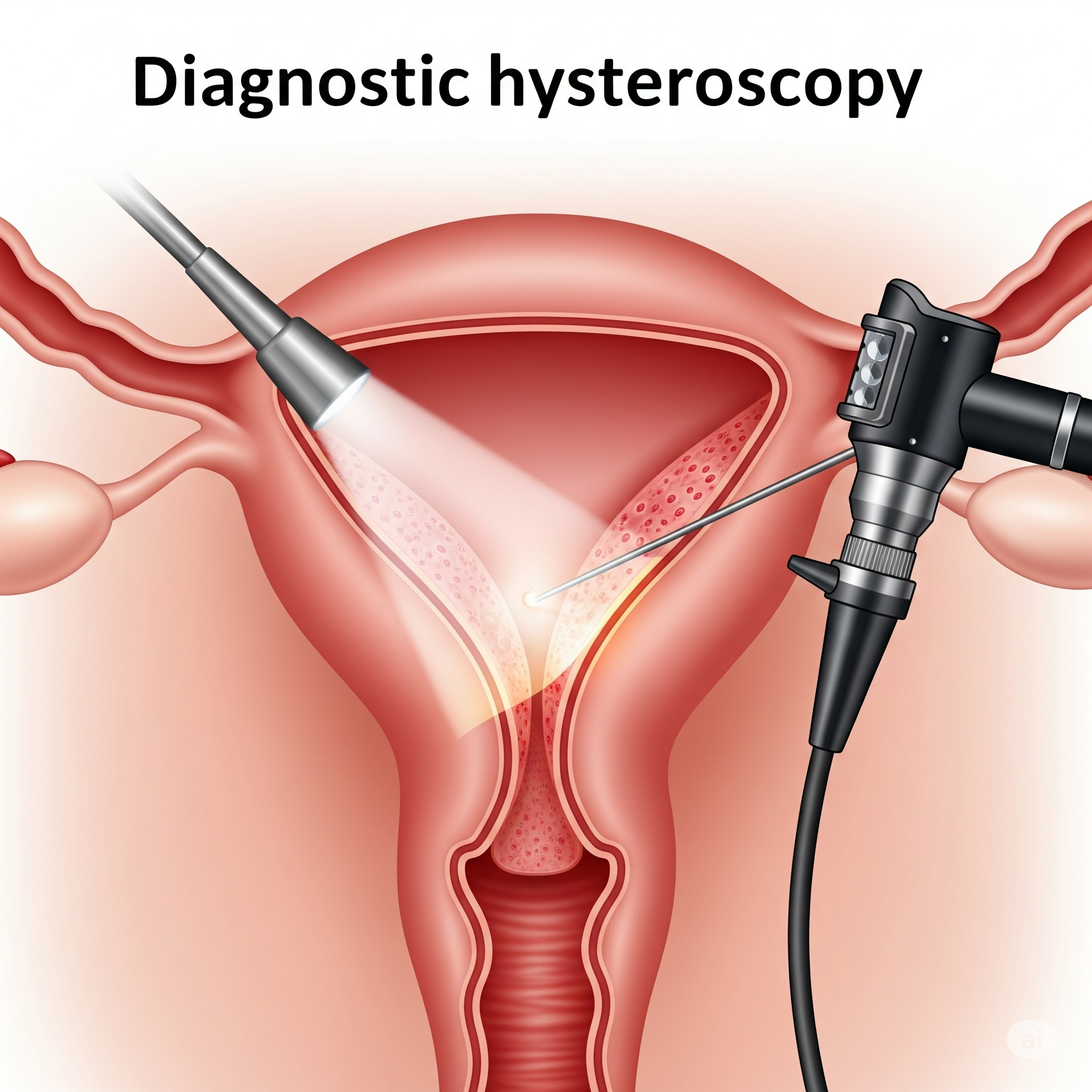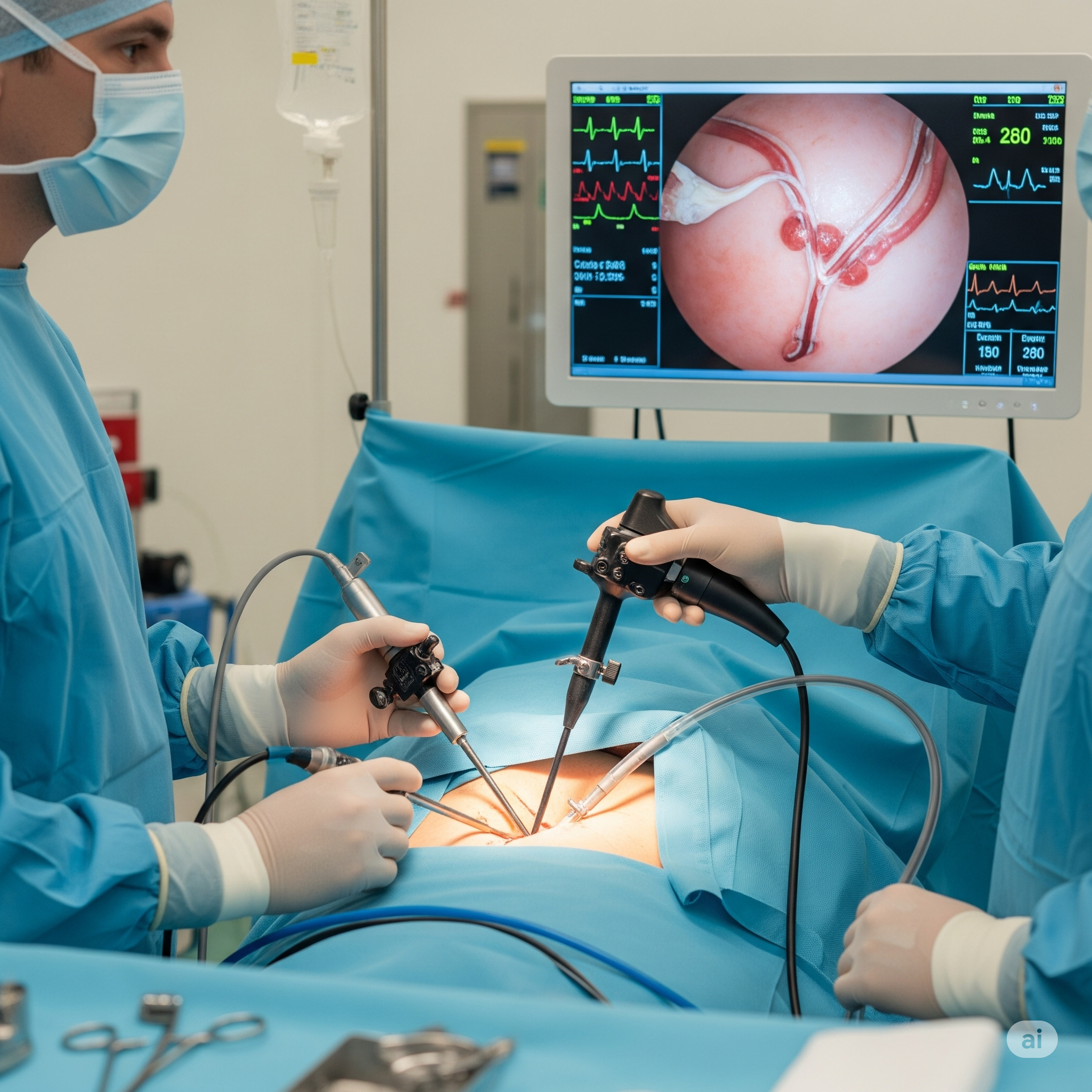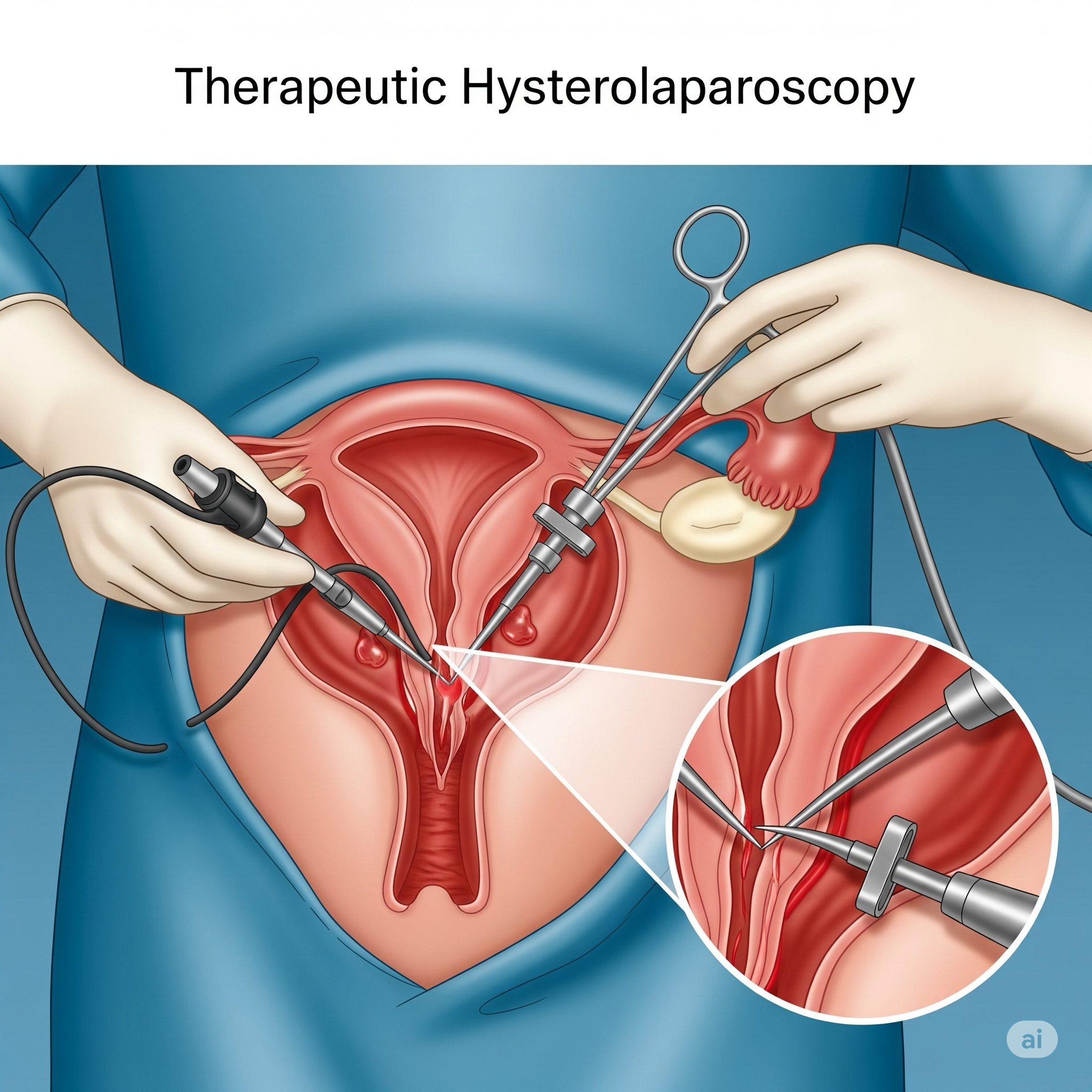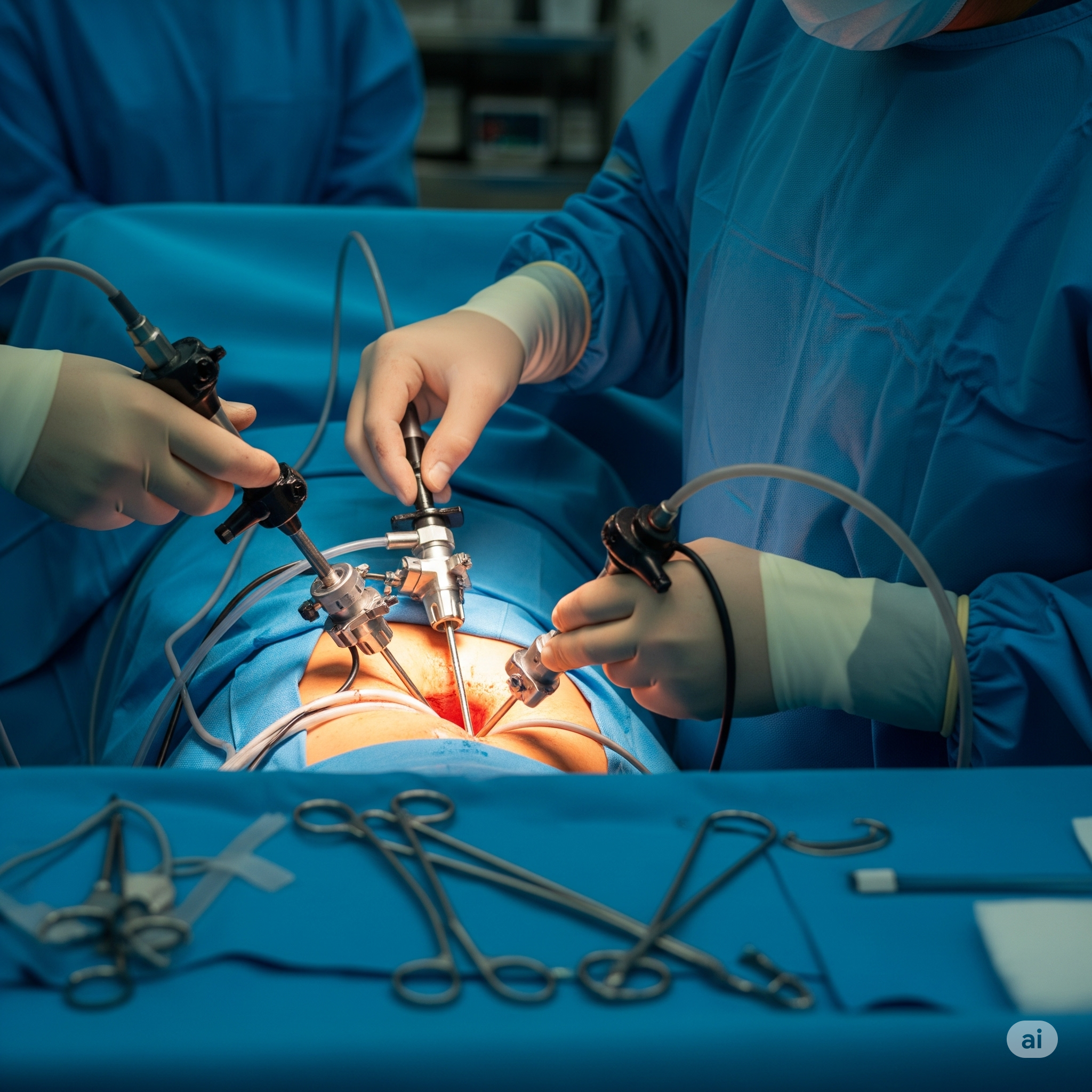Endoscopy Services

Diagnostic Hysteroscopy
This minimally invasive procedure involves inserting a thin, lighted telescope (hysteroscope) into the uterus through the cervix. It allows for direct visualization of the uterine cavity, helping to diagnose conditions such as polyps, fibroids, adhesions (scar tissue), or congenital abnormalities that may affect fertility or cause abnormal uterine bleeding.

Diagnostic Laparoscopy & Tubal Testing
A minimally invasive surgical procedure where a small incision is made near the navel to insert a thin camera (laparoscope) into the abdomen. This allows for direct examination of the pelvic organs, including the uterus, ovaries, and fallopian tubes. It's often used to diagnose conditions like endometriosis, pelvic adhesions, blocked fallopian tubes, or ovarian cysts that can impact fertility.

Therapeutic Hysterolaparoscopy
This procedure combines both diagnostic and corrective capabilities. If an issue is identified during the diagnostic phase (e.g., polyps during hysteroscopy or endometriosis during laparoscopy), the surgeon can often perform the necessary treatment immediately during the same procedure. This eliminates the need for a separate surgery, offering a more efficient and less invasive approach to fertility-enhancing treatments.

Laparoscopic Treatment of Fibroids, Endometriosis & Ovarian Cysts
We offer advanced laparoscopic surgery for conditions like uterine fibroids, endometriosis, ovarian cysts, pelvic inflammatory disease (PID), uterine septum, and issues from previous tubal ligation. These minimally invasive procedures allow for precise removal or correction of these conditions through small incisions, promoting faster recovery and significantly improving reproductive health and fertility prospects.